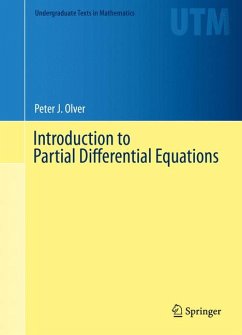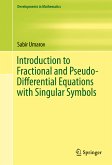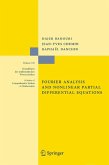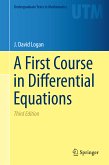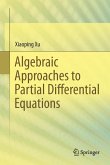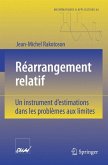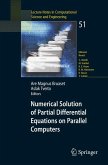This textbook is designed for a one year course covering the fundamentals of partial differential equations, geared towards advanced undergraduates and beginning graduate students in mathematics, science, engineering, and elsewhere. The exposition carefully balances solution techniques, mathematical rigor, and significant applications, all illustrated by numerous examples. Extensive exercise sets appear at the end of almost every subsection, and include straightforward computational problems to develop and reinforce new techniques and results, details on theoretical developments and proofs, challenging projects both computational and conceptual, and supplementary material that motivates the student to delve further into the subject. No previous experience with the subject of partial differential equations or Fourier theory is assumed, the main prerequisites being undergraduate calculus, both one- and multi-variable, ordinary differential equations, and basic linear algebra. While the classical topics of separation of variables, Fourier analysis, boundary value problems, Green's functions, and special functions continue to form the core of an introductory course, the inclusion of nonlinear equations, shock wave dynamics, symmetry and similarity, the Maximum Principle, financial models, dispersion and solitons, Huygens'. Principle, quantum mechanical systems, and more make this text well attuned to recent developments and trends in this active field of contemporary research. Numerical approximation schemes are an important component of any introductory course, and the text covers the two most basic approaches: finite differences and finite elements.Peter J. Olver is professor of mathematics at the University of Minnesota. His wide-ranging research interests are centered on the development of symmetry-based methods for differential equations and their manifold applications. He is the author of over 130 papers published in major scientific research journals as well as 4 other books, including the definitive Springer graduate text, Applications of Lie Groups to Differential Equations, and another undergraduate text, Applied Linear Algebra.A Solutions Manual for instrucors is available by clicking on "Selected Solutions Manual" under the Additional Information section on the right-hand side of this page.
From the reviews:
"This introduction to partial differential equations is addressed to advanced undergraduates or graduate students ... . an imposing book that includes plenty of material for two semesters even at the graduate level. ... The author succeeds at maintaining a good balance between solution methods, mathematical rigor, and applications. With appropriate selection of topics this could serve for a one semester introductory course for undergraduates or a full year course for graduate students. ... the author has clearly taken pains to make it readable and accessible." -- William J. Satzer, MAA Reviews, January, 2014
"This introduction to partial differential equations is addressed to advanced undergraduates or graduate students ... . an imposing book that includes plenty of material for two semesters even at the graduate level. ... The author succeeds at maintaining a good balance between solution methods, mathematical rigor, and applications. With appropriate selection of topics this could serve for a one semester introductory course for undergraduates or a full year course for graduate students. ... the author has clearly taken pains to make it readable and accessible." -- William J. Satzer, MAA Reviews, January, 2014
"This textbook furnishes the basis for a 1-year introductory course in partial differential equations for advanced undergraduates. ... The book is written with great care and great attention to detail throughout. At the end of every chapter there are well-chosen exercises that genuinely add depth to the concepts treated in the text. ... this book can be wholeheartedly recommended." (M. Kunzinger, Monatshefte für Mathematik, Vol. 181, 2016)
"This book easily covers all the material one might want in a course aimed at first-time students of PDEs. ... I recommend this one highly: It provides the best first-course introduction to a vast and ever-more relevant and active area. Students, and perhaps instructors too, will learn much from it. If they wish to go beyond the material taught in a first course, this text will prepare them better than any other I know." (SIAM Review, Vol. 56 (3), September, 2014)
"Introduction to Partial Differential Equations is a complete, well-written textbook for upper-level undergraduates and graduate students. Olver ... thoroughly covers the topic in a readable format and includes plenty of examples and exercises, ranging from the typical to independent projects and computer projects. ... Instructors teaching an introduction to partial differential equations course will want to consider this textbook as a viable option for their students. Summing Up: Highly Recommended. Upper-division undergraduates, graduate students, and faculty." (S. L. Sullivan, Choice, Vol. 51 (11), July, 2014)
"This introduction to partial differential equations is addressed to advanced undergraduates or graduate students ... . an imposing book that includes plenty of material for two semesters even at the graduate level. ... The author succeeds at maintaining a good balance between solution methods, mathematical rigor, and applications. With appropriate selection of topics this could serve for a one semester introductory course for undergraduates or a full year course for graduate students. ... the author has clearly taken pains to make it readable and accessible." (William J. Satzer, MAA Reviews, January, 2014)
"This book easily covers all the material one might want in a course aimed at first-time students of PDEs. ... I recommend this one highly: It provides the best first-course introduction to a vast and ever-more relevant and active area. Students, and perhaps instructors too, will learn much from it. If they wish to go beyond the material taught in a first course, this text will prepare them better than any other I know." (SIAM Review, Vol. 56 (3), September, 2014)
"Introduction to Partial Differential Equations is a complete, well-written textbook for upper-level undergraduates and graduate students. Olver ... thoroughly covers the topic in a readable format and includes plenty of examples and exercises, ranging from the typical to independent projects and computer projects. ... Instructors teaching an introduction to partial differential equations course will want to consider this textbook as a viable option for their students. Summing Up: Highly Recommended. Upper-division undergraduates, graduate students, and faculty." (S. L. Sullivan, Choice, Vol. 51 (11), July, 2014)
"This introduction to partial differential equations is addressed to advanced undergraduates or graduate students ... . an imposing book that includes plenty of material for two semesters even at the graduate level. ... The author succeeds at maintaining a good balance between solution methods, mathematical rigor, and applications. With appropriate selection of topics this could serve for a one semester introductory course for undergraduates or a full year course for graduate students. ... the author has clearly taken pains to make it readable and accessible." (William J. Satzer, MAA Reviews, January, 2014)

